.
22.11.2014

In March of 2015, an unprecedented NASA mission will launch to study a process so mysterious that no one has ever directly measured in space. To create the first-ever 3-dimensional maps of this process, a process called magnetic reconnection, which occurs all over the universe, the Magnetospheric Multiscale, or MMS, mission uses four separate spacecraft equipped with ultra high speed instruments.
Launching four satellites into space simultaneously is a complicated process. In addition, each spacecraft has several booms that will unfold and extend in space once on orbit. A launch and deployment with so many moving parts is meticulously planned.
Watch the video to get a sneak preview of how MMS will make this journey: The four spacecraft are housed in a single rocket on their trip into space. One by one, each ejects out, before moving into a giant pyramid-shaped configuration. Next each spacecraft deploys its booms.
Once in orbit, MMS will fly through regions near Earth where this little-understood process of magnetic reconnection occurs. Magnetic reconnection happens in thin layers just miles thick, but can tap into enough power at times to create gigantic explosions many times the size of Earth.
Reconnection happens when magnetic field lines explosively realign and release massive bursts of energy, while hurling particles out at nearly the speed of light in all directions. Magnetic reconnection powers eruptions on the sun and – closer to home – it triggers the flow of material and energy from interplanetary space into near-Earth space. The MMS orbit will carry the four spacecraft through reconnection regions near Earth, using this nearby natural laboratory to better understand how reconnection occurs everywhere in space.
.

.

.
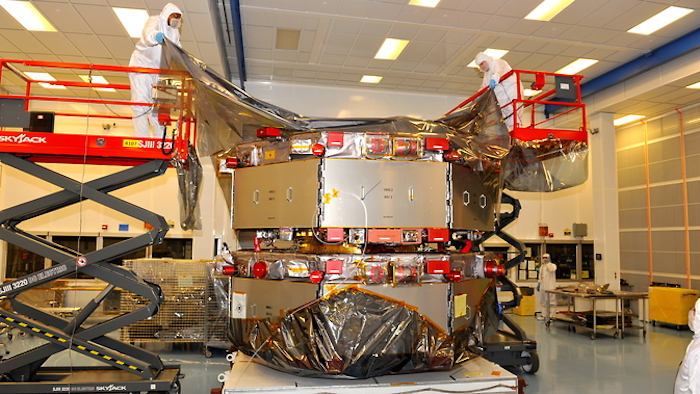
The MMS engineering team at NASA’s Goddard Space Flight Center in Greenbelt, Md., begin bagging the first two Magnetospheric Multiscale, or MMS, observatories with protective wrapping in preparation for shipment to Astrotech Space Operations, NASA’s pre-launch processing facility in Florida.
Image Credit: NASA
.
In the coming months, engineers at Astrotech will conduct extensive final testing, fueling, remove protective covers from the 100 sensors and stack all four spacecraft prior to placing them inside the nose cone of the launch vehicle. The spacecraft stack will be transported to the Atlas launch complex about 10 days before liftoff.
MMS is scheduled for launch on March 12, 2015 from Cape Canaveral Air Force Station, Florida, on an Atlas V 421 launch vehicle.
MMS will help solve the mystery of how magnetic fields around Earth connect and disconnect, explosively releasing energy via a process called magnetic reconnection. This mission will provide the first three-dimensional views of this fundamental process that occurs throughout our universe.
During its two-year prime mission, key sensors on each of the four MMS spacecraft will take measurements of the space environment 100 times faster than any previous mission, providing much needed data about how magnetic reconnection works in near-Earth space.
MMS is the fourth mission in NASA’s Solar Terrestrial Probes, or STP, program.
Quelle: NASA
.
Update: 8.02.2015
.
MMS Solar Array Illumination Test

Jan. 12, 2015. – A solar array illumination test is performed on the upper stack of the Magnetospheric Multiscale spacecraft, or MMS, in the Astrotech payload processing facility in Titusville, Florida, near Kennedy Space Center. Illumination testing of the lower instrumentation payload stack was completed in December. MMS is a Solar Terrestrial Probes mission comprising four identically instrumented spacecraft that will use Earth’s magnetosphere as a laboratory to study the microphysics of three fundamental plasma processes: magnetic reconnection, energetic particle acceleration and turbulence.
.

Atlas V Arrives for MMS
Dec. 18, 2014 – Trucks transport the Atlas V rocket and Centaur upper stage from the United Launch Alliance Delta Mariner to the Atlas V Spaceflight Operations Center at Cape Canaveral Air Force Station. The rocket will be used to launch NASA's Magnetospheric Multiscale mission.
.

NASA's Magnetospheric Multiscale, or MMS, observatories in their four-stack configuration inside the cleanroom at Goddard Space Flight Center, Greenbelt, Md.
Image Credit: NASA
Quelle: NASA
.

Atlas V to Launch NASA’s Magnetospheric Multiscale (MMS) Mission
Rocket/Payload: A United Launch Alliance Atlas V 421 will launch the Magnetospheric Multiscale (MMS) mission for NASA.
Date/Site/Launch Time: Thursday, March 12, 2015, from Space Launch Complex-41 at Cape Canaveral Air Force Station, Florida.
Mission Description: The Magnetospheric Multiscale, or MMS, mission studies the mystery of how magnetic fields around Earth connect and disconnect, explosively releasing energy via a process known as magnetic reconnection. MMS consists of four identical spacecraft that work together to provide the first three-dimensional view of this fundamental process, which occurs throughout the universe.
Launch Notes: MMS will be United Launch Alliance’s 94th launch since the company was founded in December 2006. It will mark the third of 13 planned ULA missions in 2015.
Quelle: ULA
.
Update: 19.02.2015
.
NASA magnetic field mission nears March launch
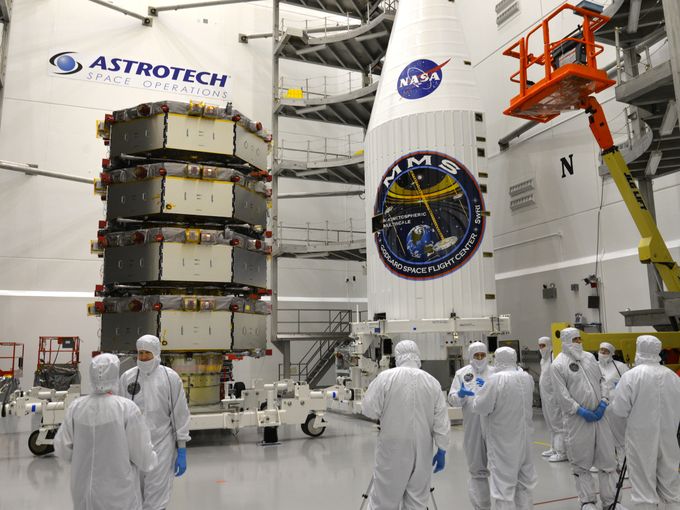
The MMS Solar Terrestrial Space Probes mission will fly four observatories through the earth's magnetosphere, collecting data for two years. The four observatories were on display for the media in the encapsulation room in building 9 at Astrotech in Titusville. Mission is scheduled for March 12th. Posing in front of the fairing for the observatories are Brent Robertson, deputy project manager, Jim Burch, principal investigator and Craig Tooley, project manager.

NASA's next major science mission has a focus that sounds fitting for Valentine's season: magnetic reconnection.
In fact, the $1.1 billion Magnetospheric Multiscale mission, or MMS, launching from Cape Canaveral in about three weeks, is concerned with fundamental physics.
The process called magnetic reconnection produces explosions of energy as magnetic fields collide, break up and re-form. It is seen throughout the universe, from solar flare eruptions to planet formation to fusion reactors on Earth.
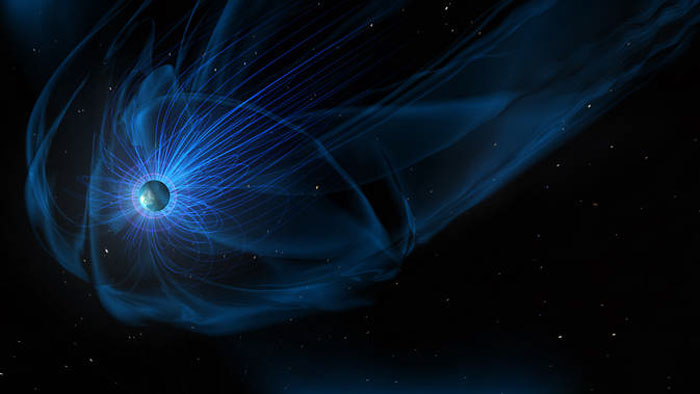





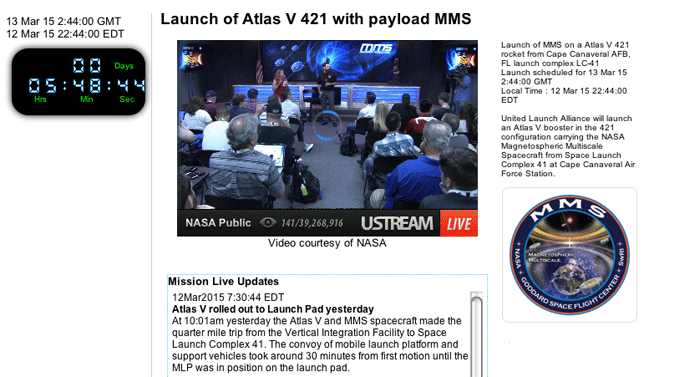


"It's a process that releases a tremendous amount of energy, and scientists just don't understand how that happens, why that happens," said Brent Robertson, the mission's deputy project manager at NASA's Goddard Space Flight Center in Maryland. "With this mission we will understand how that happens."
Four identical spacecraft will observe the phenomenon for at least two years, flying in a pyramid formation as far as halfway out to the moon.
Stacked like pancakes one on top of another, the spacecraft are set to be enclosed in a rocket's protective payload fairing on Monday at Astrotech Space Operations in Titusville, before being moved to Cape Canaveral Air Force Station next Wednesday.
Liftoff atop a United Launch Alliance Atlas V rocket is targeted for 10:44 p.m. March 12.
Quelle: Florida Today
.
Update: 25.02.2015
.
NASA Hosts a Pre-Launch Briefing for the Magnetospheric Multiscale Mission

A giant magnetic bubble, called the magnetosphere, surrounds Earth. NASA's Magnetospheric Multiscale, or MMS, mission, studies how a phenomenon called magnetic reconnection allows energy and particles from the sun to funnel inside the magnetosphere in to near Earth space.
-
After a decade of planning and engineering, NASA is in its last weeks of preparation to launch the Magnetospheric Multiscale, or MMS, mission. MMS is scheduled to fly into orbit on board a United Launch Alliance Atlas V rocket at 10:44 pm on March 12, 2015.
On Feb. 25, 2015, at a pre-launch press-briefing at NASA Headquarters in Washington, DC, scientists and engineers will discuss the mission's past and future, including the challenges of building such a complex mission consisting of four identical spacecraft and the science expected of it.
MMS will study a little-understood magnetic phenomenon that happens rarely on Earth, but is thought to be the catalyst for some of the most powerful events in the universe. Magnetic reconnection, as it is called, occurs when magnetic fields throughout the universe – as can be found surrounding Earth, at the sun, near black holes, and at the borders of the heliosphere where NASA's Voyager 1 spacecraft currently resides – come together in a mismatched alignment. The magnetic fields explosively realign with bursts of energy – sometimes on the order of billions of megatons of TNT – that can send particles surging through space near the speed of light.
Magnetic reconnection also can have an impact on humans. Magnetic reconnection is what allows energy and material from the sun to break through the boundaries of Earth's protective magnetic bubble, the magnetosphere, into near-Earth space. That energy and solar material can lead to a whole host of space weather effects, which can disrupt radio communications, interfere with satellite electronics or even affect utility power grids on the ground.
The first speaker at the press briefing will be Jeff Newmark, the interim director for the Heliophysics Division at NASA Headquarters. Heliophysics is the study of the sun, and its interactions with Earth and the solar system, including space weather. Newmark will discuss how the MMS mission fits into the Heliophysics System Observatory fleet, which currently consists of 18 missions that use 29 spacecraft. Together, these missions can track events near the sun, such as massive solar eruptions called solar flares and coronal mass ejections, or CMEs, as well as how such emissions spread out, whether toward Earth or to the farthest reaches of the heliosphere. MMS adds critical observational power to this fleet, helping scientists understand the physics of how magnetic fields around Earth connect and disconnect with unprecedented detail.
Jim Burch, the principal investigator for the MMS instrument suite science team at the Southwest Research Institute in San Antonio, Texas, will speak second about the science of magnetic reconnection. Reconnection is still a relatively young field and it was controversial when first hypothesized as an event in the magnetically intense and complex areas on the sun called sunspots. Over time, however, magnetic reconnection has become more and more accepted as something that happens not only on the sun, but in other stars and as the catalyst for such things as giant jets emitted from supernovas. Magnetic reconnection is also now known to interfere with attempts to create clean power via nuclear fusion.
Burch will discuss how now is the perfect time for this mission -- MMS is a crucial next step in advancing the science of magnetic reconnection. Studying magnetic reconnection near Earth will unlock the ability to understand how this process works throughout the entire universe.
The third speaker is Craig Tooley, MMS Project Manager at NASA's Goddard Space Flight Center in Greenbelt, Maryland. Tooley will discuss the challenges of building the MMS mission, which consist of four identical spacecraft. Tooley led the engineering team that built the observatories simultaneously over the course of five years -- an engineering triumph and a first for Goddard. In addition to the complexities of building four observatories, each MMS observatory contains 25 sensors, including eight extended booms.
The fourth speaker will be Paul Cassak, a plasma physicist at West Virginia University in Morgantown, West Virginia. Cassak will discuss the excitement the science community has about the launch of MMS. While a few previous missions have offered tantalizing suggestions about the details of magnetic reconnection, no mission has ever been dedicated to its study – and no mission has ever observed it with the resolution of MMS. With four spacecraft flying in a tight formation, MMS will be able to track a magnetic reconnection event traveling through space in a way never before possible. In addition, its sensors are the fastest ever flown, with some being 100 times faster than any previous investigation.
This kind of improved observation capability is like exploring a new continent previously seen only by satellite pictures. The depth and detail of our knowledge is going to grow by leaps and bounds, in ways that no one can yet predict. The scope is expected to be vast, with applications to the science of black holes, neutron stars, the sun, and, of course, space weather effects near Earth.
Quelle: NASA
-
Update: 8.03.2015
.


Quelle: NASA
-
Update: 9.03.2015
.
Weather looking acceptable for Atlas launch

CAPE CANAVERAL — The preliminary weather outlook for Thursday night’s Atlas 5 rocket launch from Cape Canaveral is cloudy but optimistic that the vehicle will fly as scheduled.
A weather front in North Florida and a developing low pressure system in the Central Gulf of Mexico will be influencing the weather along the Space Coast, forecasters say. Moisture over Central Florida in the mid and upper levels will increase, plus easterly winds deepen and bring a coastal shower threat.
The primary concerns for launch are cumulus clouds and the thick cloud rule.
The forecast for the 10:44 p.m. EDT launch time predicts scattered clouds at 3,000 feet and a broken deck at 20,000 feet, isolated showers, good visibility, southeasterly winds 16 gusting to 20 knots and a temperature of 74 degrees.
Overall, there is a 70 percent chance of weather cooperating with the launch rules.
Quelle: SN
.
Update: 12.03.2015
.
Atlas V rocket on pad for Thursday night launch

An 20-story Atlas V rocket is on its Cape Canaveral pad in preparation for a 10:44 p.m. Thursday blastoff with a quartet of NASA science satellites.
A transporter carrying the United Launch Alliance rocket emerged from a processing tower at Launch Complex 41 around 10 a.m. and rolled about one-third of a mile to the pad.
Four identical observatories comprising NASA's $1.1 billion Magnetospheric Multiscale mission were stacked on top of the rocket.
The mission will spend two years studying "magnetic reconnection," a process in which magnetic fields interact, break apart and reform, releasing bursts of energy.
ULA today will load the Atlas V booster with rocket-grade kerosene, and complete the fueling process Thursday evening.
The latest weather forecast continues to show a 70 percent chance of favorable weather during the 30-minute launch window.
Visit floridatoday.com at 8 p.m. Thursday for live countdown updates and streaming of NASA TV's coverage of the launch.
Quelle: Florida Today
...
Update: 21.55 MEZ


...
Update: 13.03.2015
-
NASA Spacecraft in Earth’s Orbit, Preparing to Study Magnetic Reconnection
-

As an Atlas V rocket lifts off from Space Launch Complex 41 at Cape Canaveral Air Force Station in the background, the launch can also be seen on the countdown clock at the Kennedy Space Center's Press Site. The rocket is carrying NASA's Magnetospheric Multiscale, or MMS, spacecraft.
Image Credit: NASA/Frankie Martin
-

The United Launch Alliance Atlas V rocket with NASA’s Magnetospheric Multiscale (MMS) spacecraft onboard launches from the Cape Canaveral Air Force Station Space Launch Complex 41, Thursday, March 12, 2015, Florida.
Image Credit: NASA
.
Following a successful launch at 10:44 p.m. EDT Thursday, NASA’s four Magnetospheric Multiscale (MMS) spacecraft are positioned in Earth’s orbit to begin the first space mission dedicated to the study of a phenomenon called magnetic reconnection. This process is thought to be the catalyst for some of the most powerful explosions in our solar system.
The spacecraft, positioned one on top of the other on a United Launch Alliance Atlas V 421 rocket, launched from Cape Canaveral Air Force Station, Florida. After reaching orbit, each spacecraft deployed from the rocket’s upper stage sequentially, in five-minute increments, beginning at 12:16 a.m. Friday, with the last separation occurring at 12:31 a.m. NASA scientists and engineers were able to confirm the health of all separated spacecraft at 12:40 a.m.
"I am speaking for the entire MMS team when I say we’re thrilled to see all four of our spacecraft have deployed and data indicates we have a healthy fleet,” said Craig Tooley, project manager at NASA's Goddard Space Flight Center in Greenbelt, Maryland.
Over the next several weeks, NASA scientists and engineers will deploy booms and antennas on the spacecraft, and test all instruments. The observatories will later be placed into a pyramid formation in preparation for science observations, which are expected to begin in early September.
“After a decade of planning and engineering, the science team is ready to go to work,” said Jim Burch, principal investigator for the MMS instrument suite science team at the Southwest Research Institute in San Antonio (SwRI). “We’ve never had this type of opportunity to study this fundamental process in such detail.”
The mission will provide the first three-dimensional views of reconnection occurring in Earth's protective magnetic space environment, the magnetosphere. Magnetic reconnection occurs when magnetic fields connect, disconnect, and reconfigure explosively, releasing bursts of energy that can reach the order of billions of megatons of trinitrotoluene (commonly known as TNT). These explosions can send particles surging through space near the speed of light.
Scientists expect the mission will not only help them better understand magnetic reconnection, but also will provide insight into these powerful events, which can disrupt modern technological systems such as communications networks, GPS navigation, and electrical power grids.
By studying reconnection in this local, natural laboratory, scientists can understand the process elsewhere, such as in the atmosphere of the sun and other stars, in the vicinity of black holes and neutron stars, and at the boundary between our solar system's heliosphere and interstellar space.



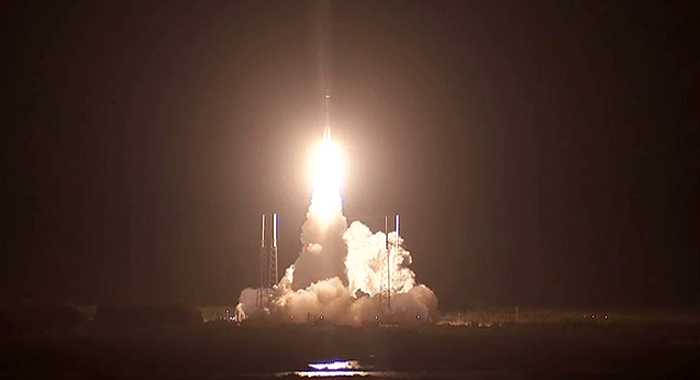
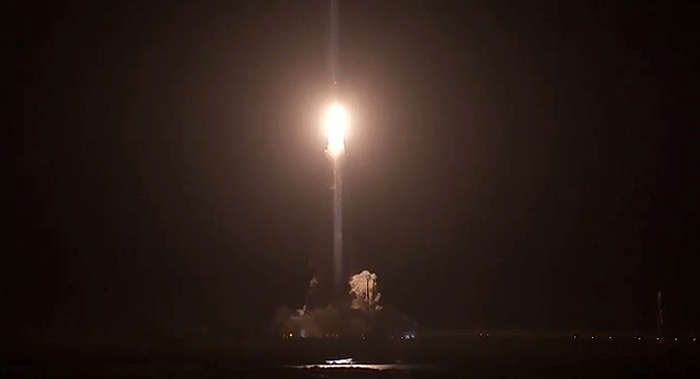


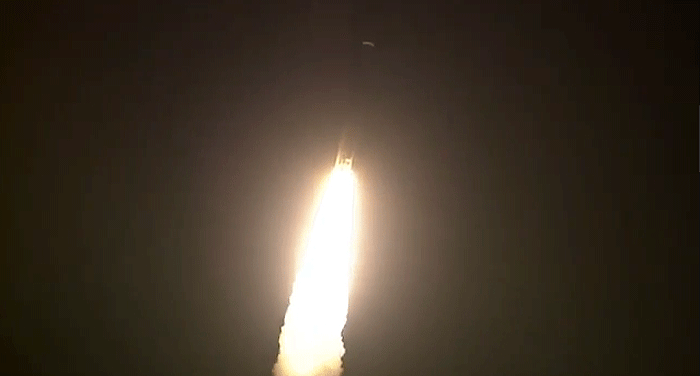







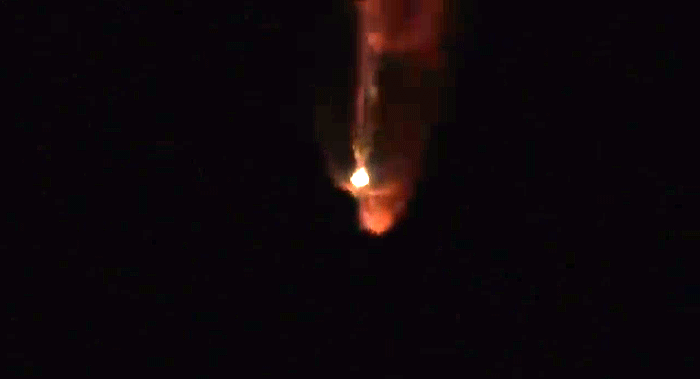




The spacecraft will fly in a tight formation through regions of reconnection activity. Using sensors designed to measure the space environment at rates100 times faster than any previous mission.
“MMS is a crucial next step in advancing the science of magnetic reconnection – and no mission has ever observed this fundamental process with such detail,” said Jeff Newmark, interim director for NASA’s Heliophysics Division at the agency’s Headquarters in Washington. “The depth and detail of our knowledge is going to grow by leaps and bounds, in ways that no one can yet predict.”
MMS is the fourth mission in the NASA Solar Terrestrial Probes Program. Goddard built, integrated and tested the four MMS spacecraft and is responsible for overall mission management and operations. The principal investigator for the MMS instrument suite science team is based at the SwRI. Science operations planning and instrument commanding are performed at the MMS Science Operations Center at the University of Colorado Boulder’s Laboratory for Atmospheric and Space Physics.
.

NASA's MMS Spacecraft Launches on an Atlas V Rocket
The United Launch Alliance Atlas V rocket with NASA’s Magnetospheric Multiscale (MMS) spacecraft onboard launches from the Cape Canaveral Air Force Station Space Launch Complex 41, Thursday, March 12, 2015, Florida. NASA’s MMS mission studies the mystery of how magnetic fields around Earth connect and disconnect, explosively releasing energy via a process known as magnetic reconnection. MMS consists of four identical spacecraft that work together to provide the first three-dimensional view of this fundamental process, which occurs throughout the universe.
-
Frams: NASA-TV
.



















Quelle: NASA
5397 Views
